Squirrels Just Want to Have Fun
Work With Their Natural Tendencies and Nobody Gets Hurt!
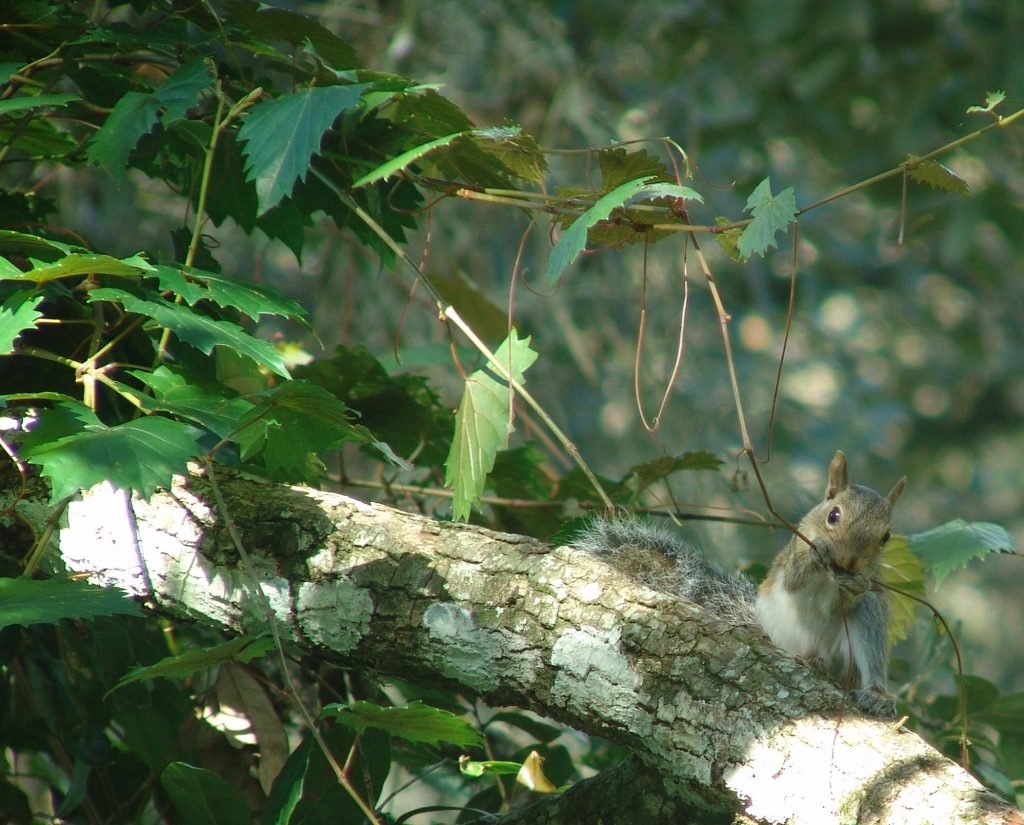
Gray squirrels are an endearing small mammal native to Florida. They can be found in what seems like every large, acorn bearing, oak tree. You could say that gray squirrels live, eat, and breathe, oak trees. This is because they use Spanish moss and oak twigs as the main construction elements of their nests within the canopy of the tree, the acorns as one of their main food sources, and the oak limbs as transportation highways within their range.
Large oak trees are habitats in themselves for gray squirrels. Most people in Florida, and the southeast, have oak trees in their yards, or neighborhoods, and are thus likely to have daily encounters with squirrels going about their lives in search of food, things to chew on, nesting materials, playing, and so forth. Gray squirrels are one of our most playful animals, and they spend a good part of their lives just having fun, but can sometimes get themselves into trouble when sharing their habitat with people.
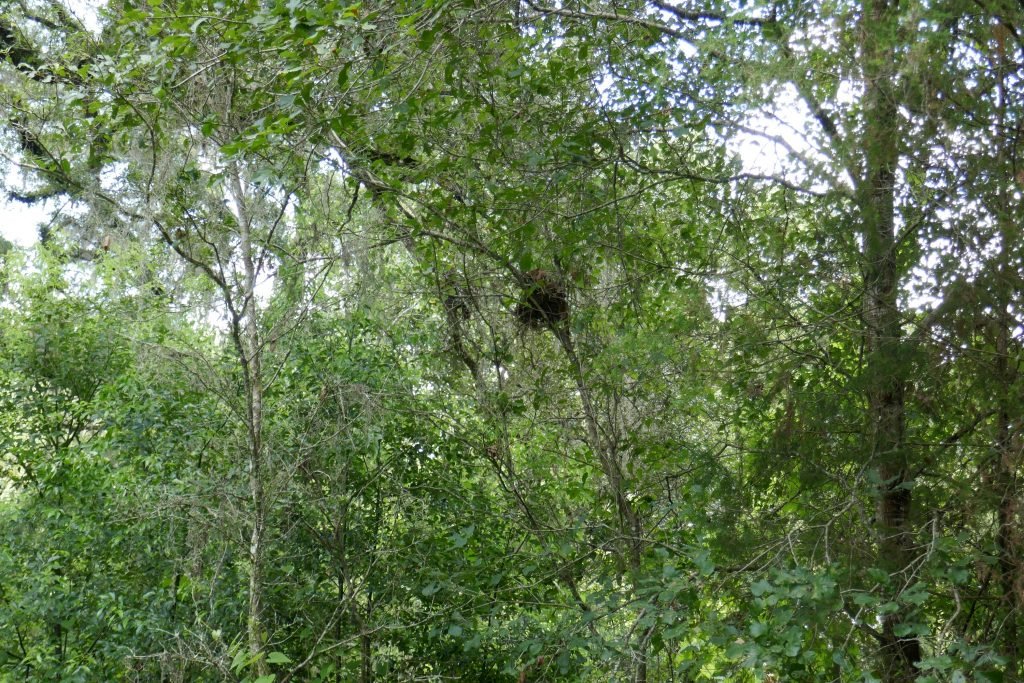
For homeowners, problems can arise when squirrels start to investigate around the home. It’s wonderful to share a green space with native animals but squirrels will often search out random things to chew on just out of boredom. They will chew on things that they might find useful as alternative nesting materials such as deck chair cushions. They may chew on things because they like the salty taste, or it feels good on their teeth. Squirrels won’t nest inside your home, or attic, but anything outside is fair game to them and may get chewed on or played with. It’s their natural instinct and, honestly, cannot be denied them so I try to tempt mine with other natural items they like and thus divert their attention away from the things I don’t want them chewing on.
The squirrels at my house typically use my deck as a highway to get from one side of the property to the other and, not surprisingly, they will stop and chew on the deck and just about anything they come across such as the grill, flower pots, statues, gardening tools, and work boots. A solution I came up with is to provide alternatives for them in their own designated play area which is a wooden table that I had been using for random gardening items. Instead of leaving my things there to be chewed on I began to pile the table with squirrel goodies. So far it is working very well and they check it out every day to see what I’ve left out for them.
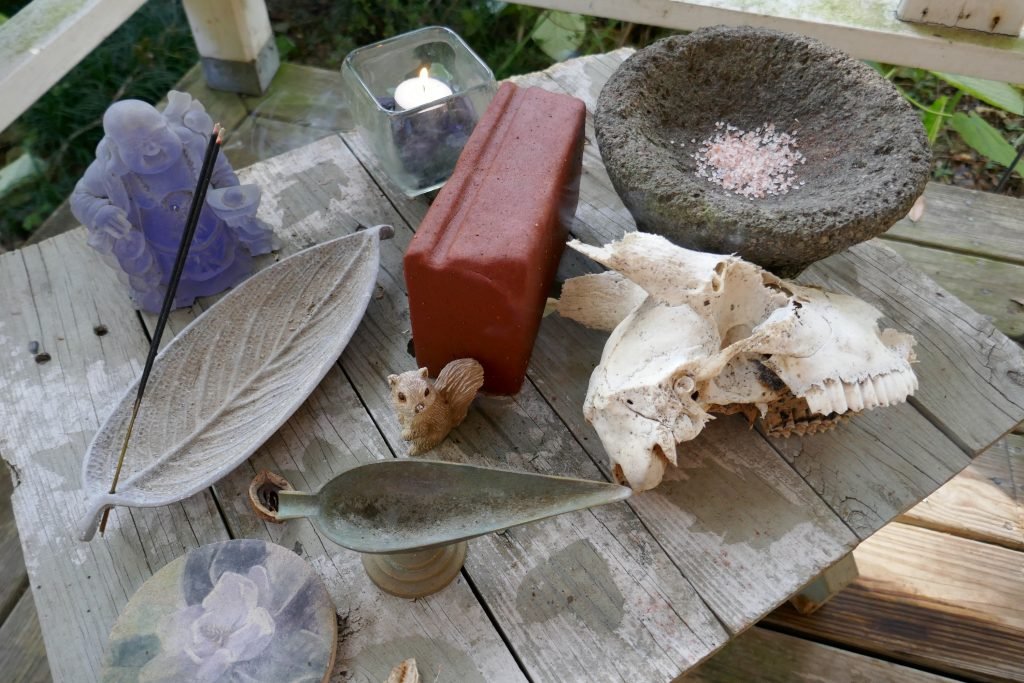
They were wisely cautious at first so in order to entice them to their chew toys, and new play area, I put out a few peanuts and a small dish of mealworms. Pretty soon it was their go-to playground and they would spend more time on their table than on the surrounding decking. They even started chewing on the table itself instead of my deck rail so I knew I was it was going to work out pretty well for all of us.
As a wildlife rehabber I learned from my mentor, Sandy, that gray squirrels must be supplied with tough, natural, materials to chew on at all life stages. As babies, chewing helps with the growing pains from their teeth, and as adults chewing helps keep their teeth from growing too long. They also gain some nutritional value in calcium and protein. Squirrel chew toys, whether in the wild or your created play area, can be bones, whole hickory nuts, acorns, shells, animal antlers, animal hooves, scraps of wool, twigs, palm fruit, animal hide, driftwood, and just about any natural item they may come across in the natural environment, but don’t necessarily have access to in your green space. Of course the items need to be natural and free of chemicals and pesticides. I always keep the squirrels in mind when I’m out in the woods and very often bring a handful of something they will like back for them.
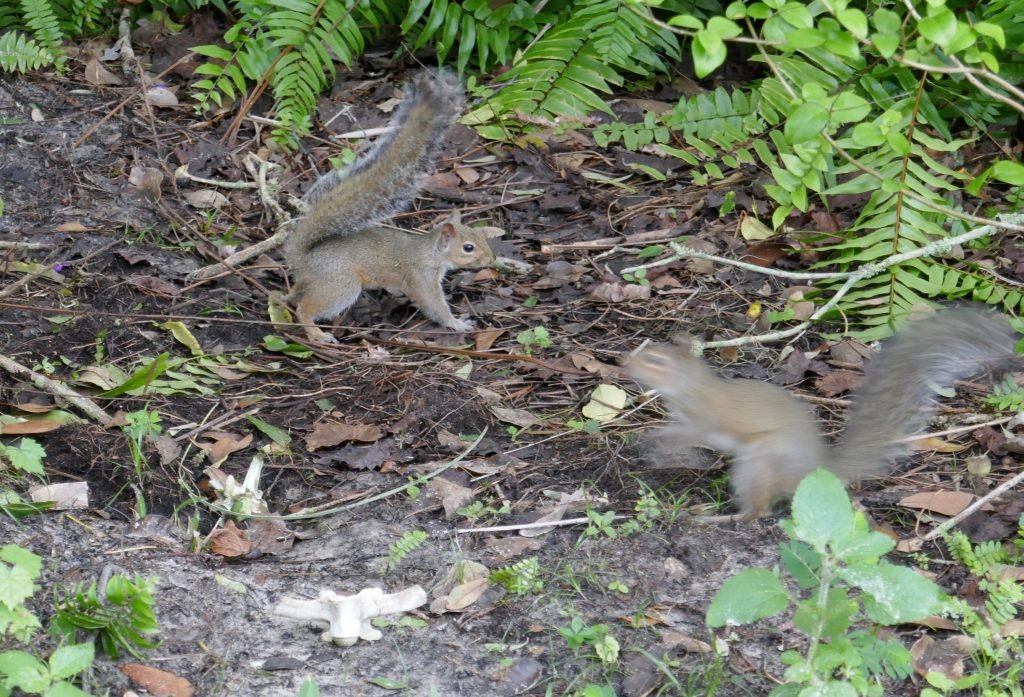
Gray squirrels love to chew on bones and antlers. They aren’t attracted to the bones leftover from our meals, but rather the weathered, sun bleached, aged bones found in natural settings like forests and cow pastures. I am a longstanding bone collector so there’s never a shortage of bones at my house. I especially enjoy collecting skulls. It so happened I had a goat skull, that I found in the forest, so that was the first chew toy on the table. They started chewing on it right away. The added bonus was that it had a set of horns and they especially enjoyed chewing on those. I then added an array of smaller bones that they could carry off to their tree, or garden hangout, to chew on at their leisure. Smaller bones are often easier to find because they come from smaller animals such as possums, armadillos, turtles, and raccoons which are more abundant than large mammal skeletons. The last time I was in the forest I came across a partial deer skeleton and brought the squirrels back a bag of separated vertebrae which proved to be a big hit because they were light enough to easily be carried up into the trees.
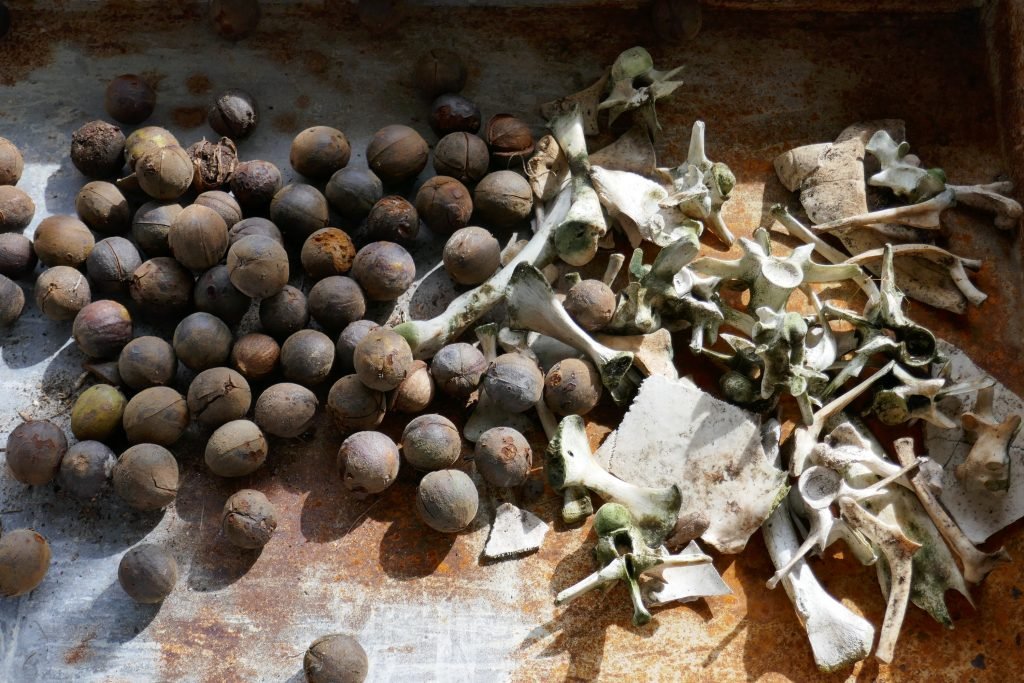
Whole hickory nuts are another favorite of squirrels and are usually easy to find. The pignut hickory is quite abundant in Central Florida and with a quick stop at the base of a fruit bearing tree I can usually get a small bucket of nuts in a matter of minutes. Since whole hickory nuts have their outer shell they can sometimes become moldy so it is best to store them inside your home where there is less moisture, and it also allows for them to be doled out over a period of time which insures the supply will last longer. If you leave a bucket of hickory nuts outside the squirrels will ‘plant’ them in every nook and cranny they can find such as the deck chair cushions and your work boots. Not to mention your supply of hickory nuts will be obliterated.
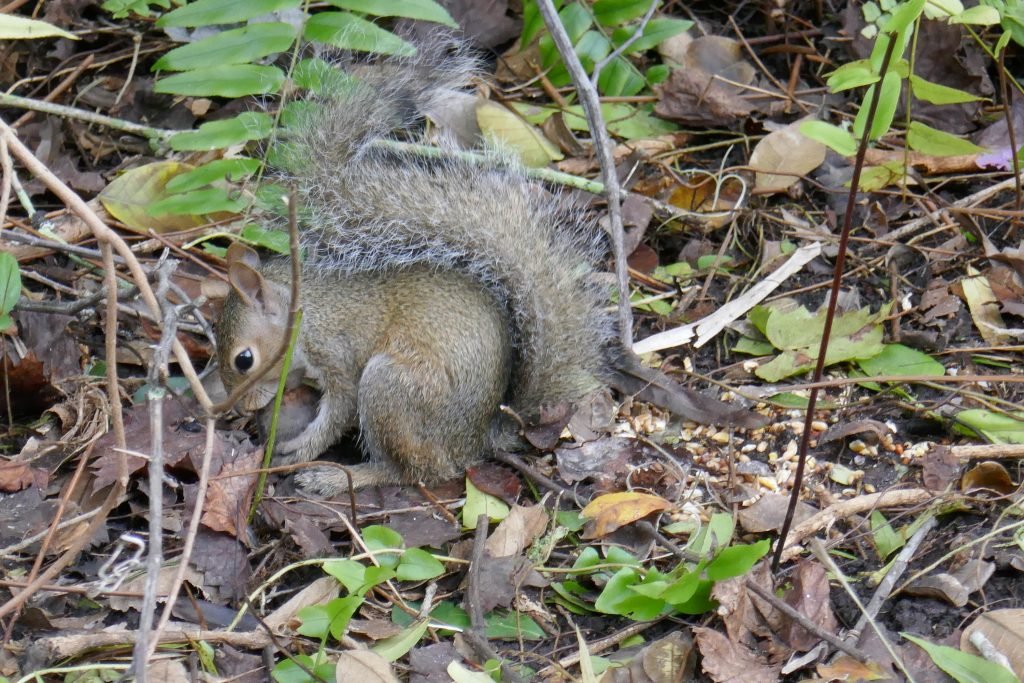
Since they seem to always be searching for something salty to chew on I purchased a small salt block at the local feed store and added it to their play area. It wasn’t as big a hit as the bones and hickory nuts, but I do occasionally see them licking and chewing on it. The biggest drawback I’ve found with the salt block is that it absorbs moisture from the air and weeps salty water on the surrounding area so it is best to place it in a container of some kind. I’m not convinced it is worth it, but for now they have one. I have also used very coarse sea salt that I have in the house for cooking. My thinking is as long as it is convenient for me I’ll put it out where they can access it if they want to.
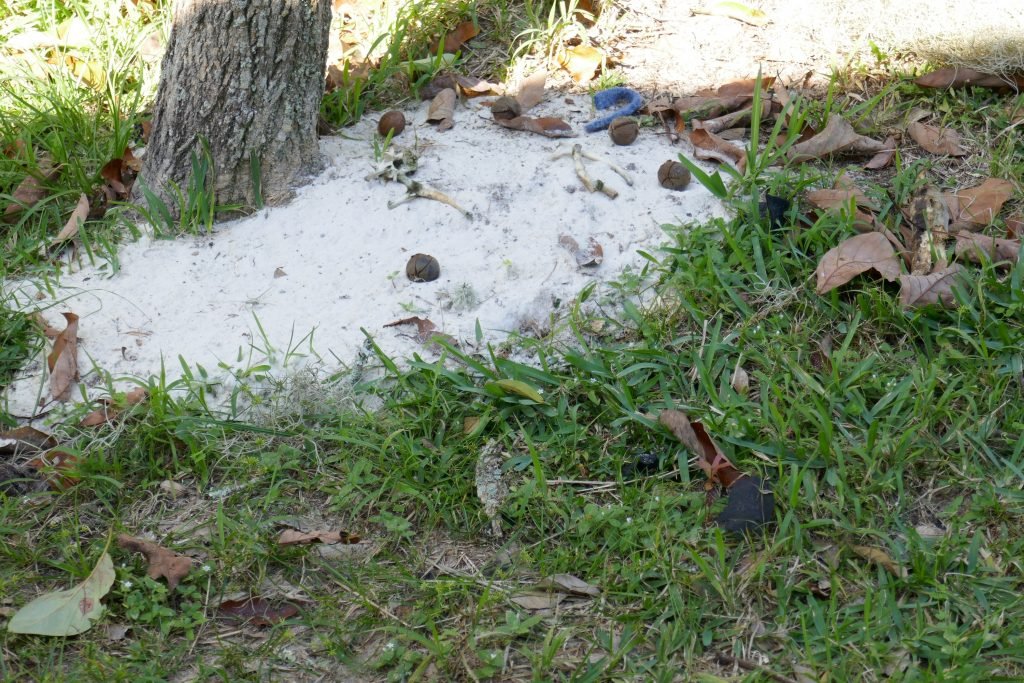
Gray squirrels create, and line, their nests with moss and leaves and will use miscellaneous material they find such as snake skins or fabric if they think it will make their nest more comfortable. They don’t necessarily chew on bedding material, but they may chew into chair cushions searching for the padding so I decided to offer them some options and discourage them from damaging my cushions. When putting out materials for them it is best to use those that won’t absorb moisture such as fleece and wool because if the fabrics become water laden it can cause health problems. The materials should also be as natural as possible without any harmful chemicals or residues. I sew, and felt, so I always have wool scraps leftover. It is best to cut them into small, short, pieces because long, thin, pieces can be hazardous as they can wrap around tiny necks, or legs, and cut off circulation or cause strangulation. Yarn, and string, shouldn’t be used unless it is cut into very short pieces. I place some of them on their play area and also put a scattering at the base of the oaks where the squirrels frequent.
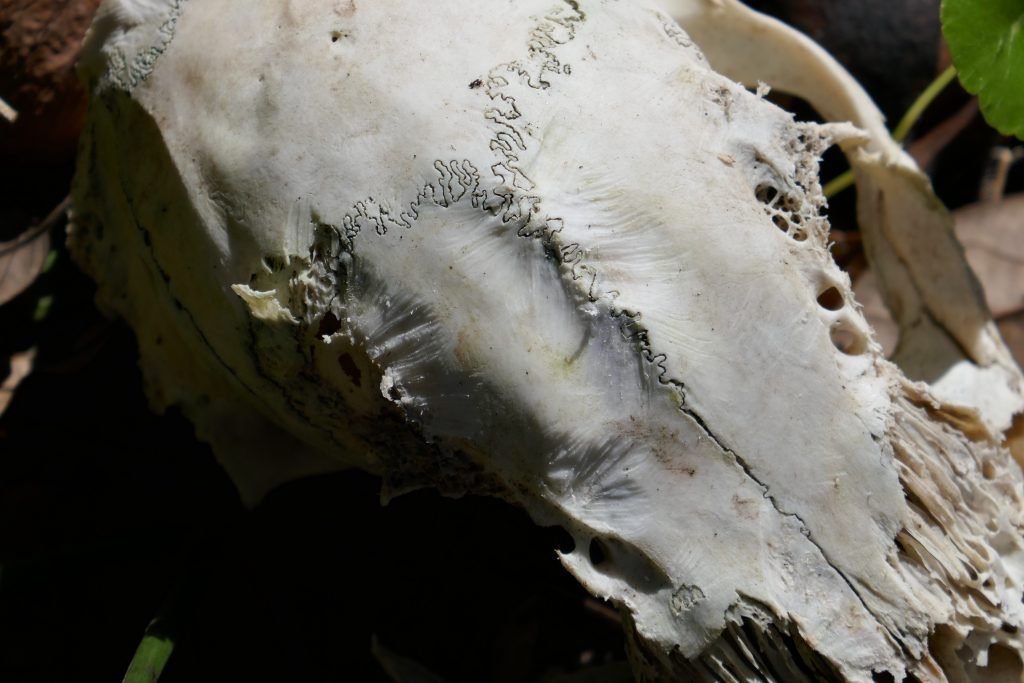
Offering your resident squirrels things to chew on, and play with, supplies them with items not normally available, while providing us a rewarding and entertaining activity. Plus, you can make use of objects you might otherwise send to the landfill, and you are proactively protecting your stuff from those little sharp teeth. Its a true win-win if you ask me.
Squirrels just want to have fun. It’s not their fault we live in their habitat. By employing a little planning, and creativity, the homeowner and gray squirrel will peacefully coexist, and the endearing personality of this little beast can be fully appreciated.
